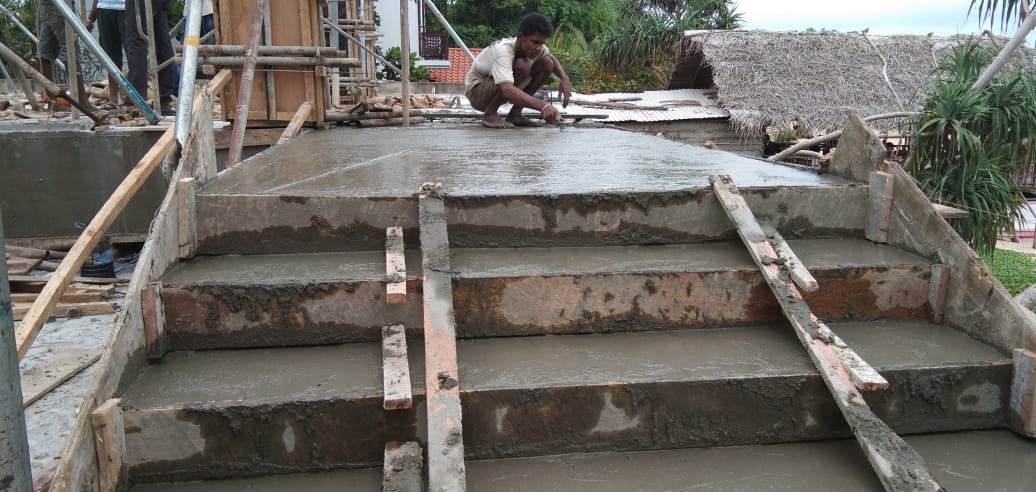There are numerous reasons for the low compressive strength of concrete. In this article we will discuss the main reasons for the development of low compressive strength of concrete.
The compressive strength of concrete is the most important aspect of concrete. If it is not developed enough, many problems arise with structural strength and durability.
Main causes of concrete with low compressive strength
The following factors mainly influence the compressive strength of concrete.
- Water-cement ratio
- Low concrete compaction
- Concrete Mixing Problems
- Problems in testing concrete
- Insufficient curing of concrete
- Miscalculation
Let's discuss each factor in detail.
Water-cement ratio
The water-cement ratio is the relationship between the amount of water and the amount of cement in a concrete mix. The water-cement ratio is an important factor in determining the strength and durability of concrete.
A lower water-cement ratio results in stronger, more durable concrete, while a higher water-cement ratio results in weaker, less durable concrete.
Therefore, we need to maintain a proper proportion of water and cement in the concrete mix. When we decide on the concrete mix, we choose the Quality of concrete. Based on the strength requirements, durability aspects, etc., the correct water-cement ratio should be determined.


Low concrete compaction
With low compression, the compressive strength decreases significantly.
There are many reasons why concrete cannot be fully compacted. The most common reasons include:
- Insufficient vibration:
Concrete must be properly vibrated to achieve complete compaction. If the concrete is not vibrated properly, the voids will not be filled and the concrete will not be fully compacted.
- Incorrect water-cement ratio:
If the water/cement ratio is too high, the concrete will be too wet and will not achieve complete compaction. Furthermore, increasing water content also reduces the compressive strength of concrete.
- Use of inappropriate aggregates:
Using the wrong aggregates can result in a concrete mix that is difficult to compact.
- Misclassified aggregates:
Furthermore, if aggregates are not properly classified, it may be difficult to achieve complete compaction.
If you have problems, the complete Concrete Compaction It is important to troubleshoot the problem so that you can find a solution.
Mixture design issues
The compressive strength of concrete can be influenced by several factors, including the composition of the mix, the water-cement ratio and curing conditions.
The most important of these is probably the composition of the mixture. The composition of the mix is a recipe that determines the proportions of cement, aggregates, water and other components of the concrete. It is important to correctly choose the composition of the mixture, as it can have a major impact on the strength of the final product.
If the composition of the mix is incorrect, the concrete will become weaker, which can lead to problems with structural strength and durability.
Therefore, before beginning construction projects, it is important to evaluate concrete mixes and ensure that material sources do not change over time.
Inadequate curing of concrete with low compressive strength
One of the main problems with concrete is that it is often poorly cured, which can result in low compressive strength.
This is a serious problem because compressive strength is one of the most important properties of concrete. Poor curing can be caused by several factors, including insufficient water, excessive heat and poor ventilation.
When concrete is not properly cured, it becomes weaker and more susceptible to damage. This is why it is so important to ensure that the concrete is properly cured. There are several ways to do this and the best method depends on the situation.
However, in general, it is important to use sufficient water, maintain a constant temperature, and ensure good concrete curing to achieve the concrete's expected compressive strength and shelf life requirements .


Concrete Testing Problem
Following incorrect testing procedures can result in concrete with low compressive strength.
From pouring to preparing the sample for testing, all necessary procedures must be followed when testing concrete.
All samples must be cured before testing and the surface of the samples must be prepared in accordance with the respective test standards.
Calculation errors that lead to concrete with low compressive strength
Even if we do everything right, if we don't do the calculation correctly we will get the wrong result.
Therefore, all calculations must be performed correctly. Furthermore, depending on the test requirement or test method, necessary correction factors must be applied.

